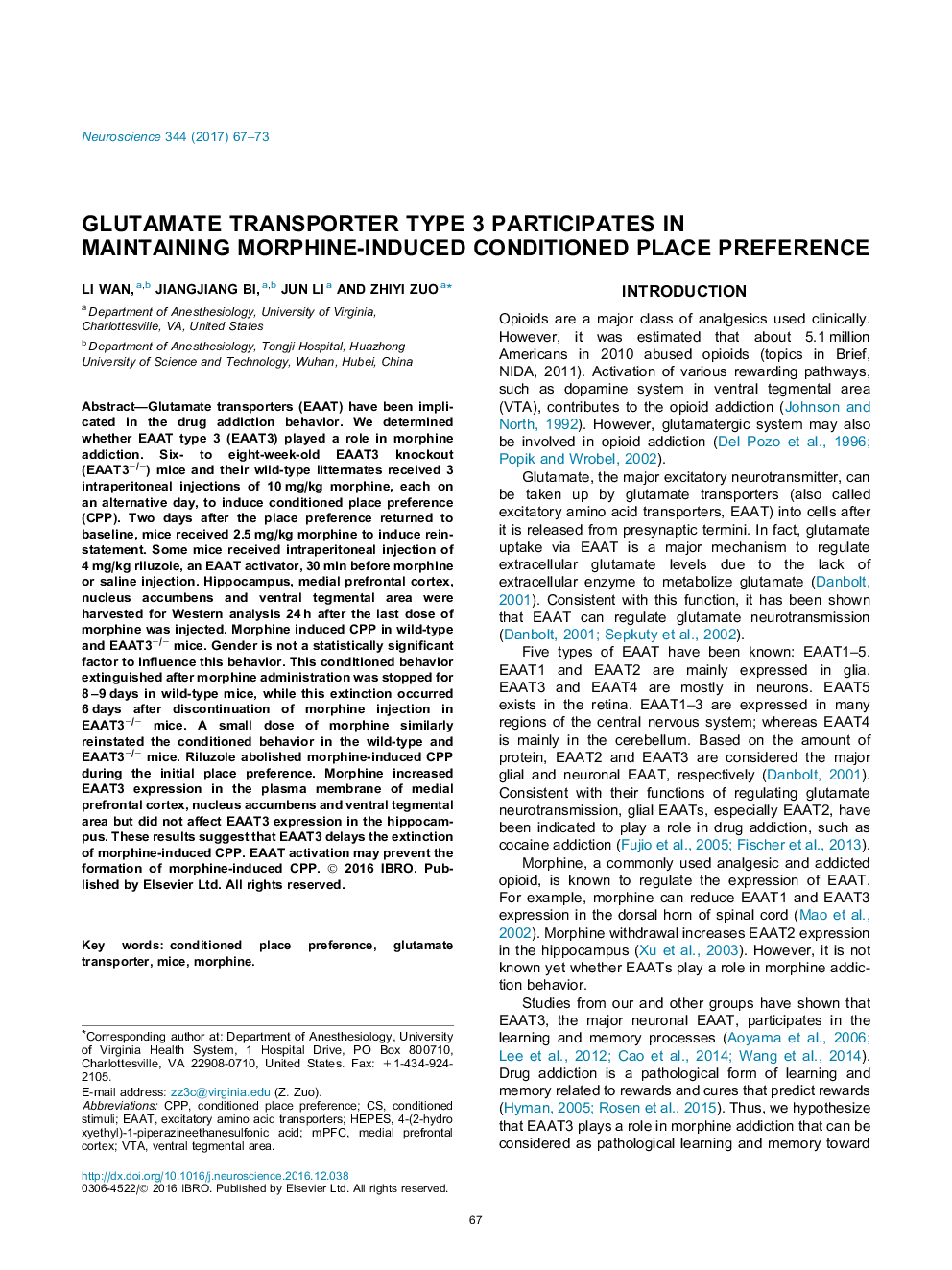| کد مقاله | کد نشریه | سال انتشار | مقاله انگلیسی | نسخه تمام متن |
|---|---|---|---|---|
| 5737741 | 1614732 | 2017 | 7 صفحه PDF | دانلود رایگان |
- Morphine induces conditioned place preference in wild-type and glutamate transporter type 3 knockout mice.
- Glutamate transporter type 3 knockout shortens the extinction of morphine-induced conditioned place preference.
- Riluzole abolished morphine-induced conditioned place preference.
Glutamate transporters (EAAT) have been implicated in the drug addiction behavior. We determined whether EAAT type 3 (EAAT3) played a role in morphine addiction. Six- to eight-week-old EAAT3 knockout (EAAT3â/â) mice and their wild-type littermates received 3 intraperitoneal injections of 10Â mg/kg morphine, each on an alternative day, to induce conditioned place preference (CPP). Two days after the place preference returned to baseline, mice received 2.5Â mg/kg morphine to induce reinstatement. Some mice received intraperitoneal injection of 4Â mg/kg riluzole, an EAAT activator, 30Â min before morphine or saline injection. Hippocampus, medial prefrontal cortex, nucleus accumbens and ventral tegmental area were harvested for Western analysis 24Â h after the last dose of morphine was injected. Morphine induced CPP in wild-type and EAAT3â/â mice. Gender is not a statistically significant factor to influence this behavior. This conditioned behavior extinguished after morphine administration was stopped for 8-9Â days in wild-type mice, while this extinction occurred 6Â days after discontinuation of morphine injection in EAAT3â/â mice. A small dose of morphine similarly reinstated the conditioned behavior in the wild-type and EAAT3â/â mice. Riluzole abolished morphine-induced CPP during the initial place preference. Morphine increased EAAT3 expression in the plasma membrane of medial prefrontal cortex, nucleus accumbens and ventral tegmental area but did not affect EAAT3 expression in the hippocampus. These results suggest that EAAT3 delays the extinction of morphine-induced CPP. EAAT activation may prevent the formation of morphine-induced CPP.
Journal: Neuroscience - Volume 344, 6 March 2017, Pages 67-73
